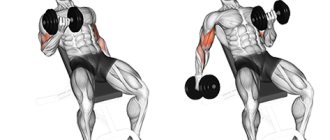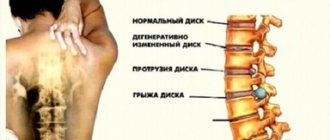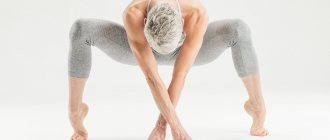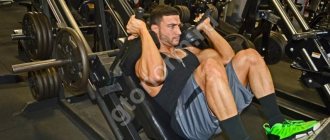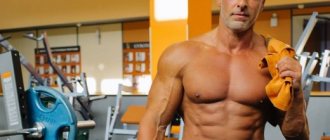We are definitely of the opinion that a coach is needed! But, at the same time, we want to support those readers who, for various reasons, currently do not have the opportunity to train with an experienced trainer.
For example: you went on a long-term business trip, or you have a very tight work schedule, or where you live there are no qualified specialists yet. Then this article is for you. We will highlight seven basic principles of proper independent training.
Recently, a lot has been written about how important a qualified coach is in preparing an athlete. Everyone needs a coach, regardless of the athlete’s qualifications. Even the most famous athletes have a mentor.
For beginning runners, a coach is essential. First of all, to understand the training system, the frequency of the load, master the running technique, draw up a training plan, and share experience. For a more experienced runner with more than 2 years of continuous training experience, the coach will help in achieving the desired result, adjusting the training process, drawing up a plan, and will also provide a fresh look from the outside and emotional support.
If you are a beginner, choose a highly qualified specialist with specialized education, a high sports rank (not lower than CMS) and serious sporting achievements (winners and prize-winners of official all-Russian and international competitions).
For a strong athlete (the so-called advanced amateur), the coach may not be a very titled athlete, but at the same time a good theorist. The main thing is that he has a fairly extensive scientific base in the field of physical education and sports. For elite athletes, a coach is more of a mentor, assistant, motivator, and for some, he has long become part of the family.
Well, if you do not yet have the opportunity to train with a trainer, then you should pay attention to the following basic principles for self-training.
Do no harm
This applies primarily to beginners. You shouldn’t rush “right off the bat” and immediately train to the point of exhaustion. Running is a fairly serious cardio load and a load on the musculoskeletal system, so it is important to make sure that it does not harm your health and you have no contraindications. To do this, you should consult a therapist and undergo a series of simple tests.
At the initial stage, you should not finish your workout in a state of extreme fatigue. This will quickly lead to overtraining and create the risk of injury. The load should increase gradually, from week to week. If you decide to start running, you need to get involved gradually. Experts recommend starting with brisk walking, periodically including light jogging, and then gradually eliminating walking. Perhaps at the initial stage, if running is still difficult for you, Nordic walking with poles will suit you.
Standard running plan for beginners*
1 Week
marathon and half marathon training plans and start training today!
Fast walking (speed approximately 9 min/km). Every day, gradually increase the duration of walking from 20 to 40 minutes.
2 week
Alternating walking and running. 5 minutes walk, 5 minutes light jogging. Total duration 30 minutes.
3 week
Light jogging. Gradually, every day, increasing the jogging time from 20 to 40 minutes.
*trainings on Mondays, Wednesdays and Fridays
At the initial stage, it is recommended to perform strength training only with your own weight. For example, you shouldn’t immediately grab a fifty-kilogram barbell and do squats with it if you see someone nearby doing this exercise. But experienced amateur runners are recommended to use additional weight during strength training, but preferably no more than 15% of their own body weight.
Don’t try to chase other people’s performance and results. If your friend has a high athletic level, and you have only recently started training, then you should not try to immediately run on par with an experienced friend. This can quickly lead to injury. “The one who walks will master the road!” Therefore, do not train more or more intensely than necessary.
It is useful to take a treadmill test with a gas analyzer. The test will allow you to identify your anaerobic threshold and pulse zones in which it is safe to train. And for those who want to lose weight, this test will show those pulse zones in which you begin to burn fat.
Recovery training.
Typically followed the next day or every other day by long training sessions or competitions. Despite the popular belief among runners that “recovery” training allows the body to better rid itself of accumulated lactic acid, this is not true. The main benefit of such training is improving your physical fitness due to the fact that the body gets used to working in a state of fatigue.
Training needs to be varied. This is due to the fact that with monotonous training, the body gets used to certain loads, adapts and stops developing. Good workouts need variety. Of course, at the very beginning, small cross-training and strengthening exercises may be enough, but the longer a person trains, the better his body adapts to the loads received. If the loads remain the same for a long time, their efficiency decreases. Besides, monotonous workouts are just boring. When you wind kilometers around a stadium or a park, sooner or later you will definitely want some variety.
Pulse zones
Fortunately, over the past decade, the sporting goods market has been filled with all sorts of gadgets, including sports watches with a heart rate sensor. One of the common mistakes made by amateur runners is daily training at a high heart rate. With the help of a sports watch, you can easily monitor your heart rate (heart rate).
Low Heart Rate Running: How and Why to Train at Low Intensity
Long cross-country runs, warm-ups, and cool-downs are performed at a low heart rate. Interval segments are at a much higher level. Almost all the latest professional sports watches have a built-in GPS system, making it much easier to run on new trails in rough terrain. The watch will record your maximum and minimum heart rate during training, the number of kilometers traveled and calories burned, and predict recovery time.
And here it is worth noting that many highly qualified trainers do not recommend focusing on your gadget in order to learn to feel your body.
Determine the IPC
VO2 max (maximum oxygen consumption) is one of the key physiological parameters that characterizes a runner's form (namely, his aerobic performance). It can be calculated using special tests on a treadmill or in a stadium, during which samples of exhaled air are collected at maximum tolerated loads. You can calculate the approximate level of MPC based on your competitive results - for this, in the book “From 800 meters to the marathon” there is a special table of correspondence between MPC and results at competitions. Another way to calculate your VO2 max is to use a Garmin watch (currently available on the Forerunner 620 and Fenix 2), which calculates an approximate value based on the pace of your workouts and your observed heart rate (heart rate) during them.
Let's consider important questions that the reader may have:
- Does the IPC characterize my form unambiguously? That is, can I be sure that with VO2 = 55 I will overtake a runner who has VO = 52? Answer: Not necessarily, as all runners have different oxygen utilization efficiency, psychological attitudes and other factors that influence the result.
- Is it possible to predict the results of competitions knowing the IPC? Answer: yes, but the accuracy will not be very high (see above - there are other factors). My own experience shows a good forecast at distances of 5 and 10 kilometers according to the calculated (that is, calculated using a Garmin watch, without taking air samples) MPC. But knowing the MPC is enough to understand what pace to use in training.
Beauty does not require sacrifice
No need to run in your favorite sneakers. There are professional running shoes for this. This is extremely important for the health of your joints, especially your knees. Good running shoes have cushioning technology that stabilizes the impact on your joints. It is recommended to have several pairs of running shoes: for long cross-country runs, for speed training, for cross-country running.
As a rule, beginners need shoes with increased cushioning until their running technique is perfected. You should not immediately purchase sneakers for speed training (they are also competitive models). Let us once again recall the most popular manufacturers of professional running shoes: Asics, Mizuno, Saucone, Brooks, Nike, Adidas, Hoka.
Don't forget about seasonal equipment. Don't get too cold in winter and don't get overheated in summer. Now on the sportswear market there are a huge number of different options for all weather conditions. It has been scientifically proven that bright sports equipment improves your mood and even motivates you to exercise.
Breathing while running
A beginner, as well as an athlete who has taken a long break from training, is faced with pain in the side. This is due not only to the presence of unprepared muscles, but also to improper breathing.
In order to avoid discomfort when running , there are several useful tips:
- Breathe deeply and deeply. Small and infrequent breaths will lead not only to pain, but also to hypoxia - lack of oxygen.
- Take one breath per four steps when running, and exhale the same way.
- Inhale through your nose. Exhale sharply through your mouth.
- Start inhaling the moment you push off with your right leg, this will reduce the load on your left side.
Planning
A training plan is an important principle in preparing for a specific start (professional competitions, amateur race, passing standards, etc.). It is compiled taking into account physical data, goals, characteristics of the body, and the current level of physical fitness. Training according to the plan forces the body to always be in good shape, reach its peak form at the right time, avoid overtraining, and recover properly.
Preparation plans for a marathon, half marathon, 10 km race
A plan is essential for any results-oriented athlete. Planning has its own hierarchy - the duration of training periods and cycles:
- Long-term: four-year Olympic cycle and macrocycle (one year or several months).
- Medium term. Mesocycle - a plan for several weeks.
- Short. Microcycle – one week or several days.
Periods of the training process are needed for freedom of planning and the possibility of adjustment. The competition calendar and seasonal changes dictate peak phases. At the moment, there are a sufficient number of mobile applications that help you keep an electronic training diary, analyze the work done, make predictions, and compare your performance with thousands of other users of this application.
Participate in competitions and adjust the plan
Of course, you can stay in shape and run solely for your health, refusing to participate in competitions. But if you not only jog, but also have a desire to improve and improve your results, then you should participate in competitions for the following reasons:
- It's a goal with a fixed time and distance that can be daunting or motivating, but either way it will keep you from slacking off and skipping workouts for unjust reasons.
- In competitions, you are working at your MAX level, and competitions (along with interval training) are a surefire way to improve it and take it to the next level. “Competition is the best training.”
- Running with thousands of other runners, supported by fans, is easier and more fun than running in the park. They add variety to your running experience.
After your next competition, check your results on the VDOT table or using an online calculator - it may be time for you to adjust your training pace as your level has increased.
As we said earlier, it may be incorrect to compare the VO2 max of different runners due to other physiological and psychological factors, but you can and should look at the dynamics of your VO2 max - it reflects your development. I note that it allows you to understand the dynamics of development by comparing different competitions: you can convert the results of successive 10-kilometer and 21-kilometer races into VDOT values and evaluate your progress.
Regularity
The entire load must be regular and dosed. If you run high-intensity workouts 1-2 times a week, and then lie on the couch with your paws hanging down, then such training will be of little use, and will most likely even harm your cardiovascular system. If you decide to start running, then do it on a regular basis, and not when the muse flies in and says that today is “that day.” If you practice regularly, each workout will no longer be stressful for the body.
For beginners, as a rule, the training schedule is 2 training sessions per week, then increasing to 3-4 days per week, with a rest day between training days. For more experienced athletes, the total number of training hours and days increases as fitness level increases.
Supercompensation principle
Before drawing up a training schedule, it is necessary to understand what processes occur in the body in various phases of the training process.
Let's highlight 5 phases of the training process:
- Traumatization. Muscle fibers are injured by the load, the body receives stress from the workout, with the help of which muscles will be gained, the fat burning process will start, and physical data will improve. Muscles don't grow during training! Fat doesn't burn! Stamina does not increase! Training is the trigger for starting the processes that will help you achieve the goals listed above.
- Rapid recovery phase. Lasts 30-90 minutes after completion of the workout. The nervous system is restored, the level of anabolic and stress hormones returns to normal (not completely). In this phase, it is necessary to give the body rest. It is advisable not to be too active, to nourish the body with quickly digestible food. Those who want to gain muscle mass can use chocolate, bananas, milk, eggs. When losing weight, it is better to either refuse food altogether, move the meal within 90-180 minutes after training, or use amino acids, which will slightly speed up fat burning while maintaining muscle mass.
- Slow recovery phase. Lasts until the body is completely restored to pre-workout levels. Read more about how to recover after a workout here.
- Supercompensation phase. The body is restored to pre-workout levels and creates a “reserve” - additional opportunities to overcome similar stress with less effort. This “reserve” can be expressed in the form of gained muscle mass, 200 grams of fat lost, or improved functioning of the musculoskeletal system. When the body has created a “reserve” for a less stressful previous workout, we can do a little more - increase the load so that the next time the body is adapted to new indicators. This is the principle of load progression, which can only be implemented in the supercompensation phase.
- Loss of super compensation. If an athlete does not train in the supercompensation phase, the body stops spending energy to maintain the “reserve”. The athlete returns to the indicators that he had before the training.
It is critical to train during the supercompensation phase!
Training should be carried out only in the supercompensation phase!
There are special techniques that allow you to train in the recovery phase, in order to then get more supercompensation, and stretch this phase for a longer period.
But there is no point in using these techniques for a beginner.
Signs of the onset of supercompensation are:
- Disappearance of pain in the target muscles.
- Lack of psychological aversion when thinking about training. Desire to train.
- The ability to do more work than in the previous workout.
Example: today you were able to run for 15 minutes, after which your body refused to continue training. During the recovery phase, you will run for 10-12 minutes with the same comfort. After the end of the recovery phase - the same 15 minutes. The basics of supercompensation are 16-18 minutes. After loss of supercompensation – 15 minutes. Training in the supercompensation phase is a slight discomfort. You can squeeze out 17 minutes of running in the recovery phase, but this will be just a “squeeze”, and not progress with slight discomfort, as in the supercompensation phase.
Training in the supercompensation phase is work and pleasure. It’s difficult for you, but the training doesn’t turn into hell, and after the end you get pleasant feelings. In the recovery phase, every step seems like hell, and after training you want to quit everything and never repeat it. It is important to understand this difference in order to seize the moment to train.
Volume
Another important criterion is the number of kilometers that the athlete “runs” during the month. It is customary to calculate it by adding up weekly volumes, because... it's more informative. For beginners, this data is unlikely to provide any useful information. But for advanced runners, for those who are results-oriented, and, of course, for professionals, the volume of kilometers per month is a very important indicator. Based on it, many training programs are calculated.
For a beginner, 20 km per week is enough (3 times a week for 6-7 km). For an experienced athlete, during the non-competitive period, this figure is 60-90 km. For professional athletes specializing in long-distance running, this figure reaches 150 km per week, depending on the cycle.
Don’t forget that men and women with the same level of physical fitness have significantly different monthly volumes. Note: We are not currently considering ultramarathoners whose monthly volume is several times greater than that of the average half marathon runner.
Algorithm for determining the IPC from a book
- Find the VDOT value (Jack Daniels refers to it as VDOT, indicating by its other name that it is a calculated value, “pseudo-VO2”) that corresponds to your competition results in the “VDOT Values for Competition Results” table. For example, let's say you ran 5,000 meters in a race in 22 minutes. The closest MIC to this value is 44. In addition, you finished the half marathon in 1:45:02 - this corresponds to an MOC = 43. As a result, you have two values (there can be as many of them as the distances you have completed in competition mode ; some may coincide).
- Select the highest VDOT value obtained. In our example, this is max {43, 44} = 44. This is the value you will use to calculate your training pace.
- You can predict your result in competitions using the obtained value. For example, if you set your VO2 max = 44 and have no marathon experience, you can expect to run a marathon in 3:32:23 (corresponding to VDOT = 44) with the proper training volume.
general physical training
“Strong muscles support strong ligaments” – sports doctors like to repeat this phrase. General physical training (GPP), performed regularly, will perfectly strengthen the muscle frame and increase overall physical endurance. Functional training is simply necessary for runners, because successful speed work is impossible without a strong muscle corset. Strong muscles and ligaments are the key to proper and efficient running.
Physical Fitness for Runners: 30 Bodyweight Exercises
In the weekly training cycle of an amateur runner, there should be at least two workouts in which significant attention will be paid to a set of strength exercises. For experienced runners, general physical training is an integral part of the training process and is performed in almost every workout; its intensity and duration depend on the training plan.
By following these basic principles, you will significantly improve your results. Do not forget also about the importance of proper nutrition and the recovery process.
Coach's choice. What criteria must it meet?
Have a professional physical education education
Have sports experience of at least a candidate master of sports in the particular type of running in which you want to specialize - sprint, long sprint, middle or distance distance.
Must be active in training. The difference in training methods, even among amateurs, has changed a lot over the past 5 years, and if the trainer you want to trust has had a long break in his practice, it is better not to use this option.
How to train after finishing the program?
Having completed the fifth week of training, you are ready to independently plan your training. Perform 3 runs per week, gradually increasing the pace and length of the distance.
Try running 1 kilometer at 30% pace without starting to jog. If it works, increase the distance by 100 meters. In a month you will be able to run 2 kilometers at a high pace!
If you failed to run 1 kilometer without rest, there is no reason to be upset! Run 500 meters without stopping. Everyone's reaction to stress is different, so the development of endurance occurs differently. Having overcome the barrier, the result will grow rapidly.
Run 200 meter segments. This is the next step in developing endurance and a good fat burner. Run 3 segments after your main workout. If you run around the stadium, you can perform segments of alternating running: 200 meters of acceleration and the rest of the circle jogging.
If you feel that 3 kilometers is an easy task, make the workout more difficult. While running the distance, stop and do 20 push-ups or squats, and do static exercises. You can use weights weighing 1-3 kilograms, which are attached to your feet. It can also create additional stress on your arms and shoulders.
Important. After each workout, stretch to make your muscles stretch and look attractive.
Start by walking
If the last time you ran was at school, and then reluctantly, one flight of stairs causes shortness of breath, or if you are overweight, it is better to start with walking.
For at least a week, aim to walk 10,000 steps every day. It’s just a number, but it’s better to have something to focus on: it makes it easier to start.
Every kilometer you walk improves your fitness and prepares you for your first run. If you lead an active lifestyle and walk a lot, you can immediately start running training.
Why should you train to run?
The clearest explanation lies in the concept of endurance - the ability to withstand fatigue. Modern man gets tired quickly. For example, if we miss the bus, we wait for the next one, which will arrive in 20 minutes, but you can walk in 10 minutes. We would rather stand at a traffic light than run a little and cross earlier.
Running training bonus.
Running is not only good for health, but also aesthetically beautiful. The developed running technique is fascinating, you want to watch without taking your eyes off.
Content
- 1 Composition and types of training sessions 1.1 Warm-up 1.1.1 Exercise 1. Running with high hip lifts.
- 1.1.2 Exercise 2. Running with a high hip lift and bringing the shin forward.
- 1.1.3 Exercise 3. Running on straight legs.
- 1.1.4 Exercise 4. Throwing the shin back.
- 1.1.5 Exercise 5. Jumping running.
- 1.1.6 Exercise 6. Mincing run.

